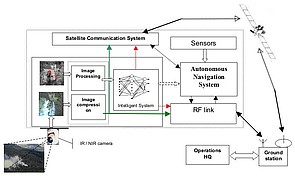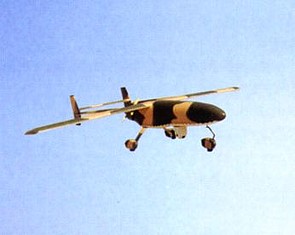Development of an Integrated Airborne Fire Detection System


Description of the project:
The aim of the project was to develop an airborne surveillance system based on autonomous UAVs (Unmanned Aerial Vehicles) for wildfire detection. Particularly, the proposed modifications included the following:
- Development and installation of an onboard system capable of detecting and evaluating thermal sources. It incorporates thermal sensitive sensors (IR or NIR camera) and the software/hardware needed to perform the evaluation of the danger that every thermal source poses. The development of the software is based on pattern recognition and machine vision techniques.
- Integration of the fire detection system with the UAV-ground station communication system. This allows for the real time transfer of data generated by the IR/NIR or visible light (RGB) camera.
- Modification of the autonomous navigation system of the UAV so it can receive input from the proposed surveillance system. This provides the vehicle with the ability to adjust its course according to the situation detected. For example, if a fire is detected then the UAV can automatically orbit around the hotspot.
The flight of the UAV will be autonomous and/or semi-autonomous but there will also be full supervision.
Overview of the system
The sensor used for the fire detection system is, as mentioned above, an IR camera. For day missions it is possible to use a visible light (RGB) camera as an alternative or supplement. In any case the camera is placed on the lower part of the aircraft’s fuselage mounted on the appropriate gyroscopic turret allowing it to remain oriented towards a pre-selected direction. The signal created by the camera is directed to the on board computer for further processing. For a schematic representation of the proposed system’s architecture refer to the left figure. After being processed, the received images are presented to the intelligent system responsible for their interpretation. When the system recognizes the existence of a forest fire, it produces an alarm signal that is transmitted to the ground station through the available communication link (RF or satellite). At the same time, compressed images of the supervised area are also transmitted to the ground station so the station’s personnel can evaluate the situation and make decisions about the mission.
The system proposed for fire detection can also be used, after some modification, for search and rescue missions. These modifications include different thermal sensors sensitive to human body temperature and appropriate adjustments in the recognition system.
The project was funded by the Greek Secretariat for Research and Technology through the EU Funds Forum 2000-2006 and the STN ATLAS-3 SIGMA S.A.




